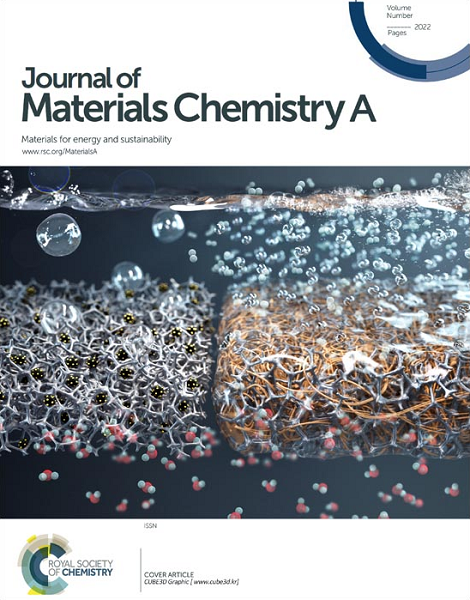高电流密度锂金属电池中引入的亲石性导电氧化物双衬底沉积
IF 9.5
2区 材料科学
Q1 CHEMISTRY, PHYSICAL
引用次数: 0
摘要
锂(Li)金属阳极在高能存储应用中具有巨大的潜力,但其实际实施受到锂枝晶形成的严重阻碍,这损害了电池的寿命和安全性。本研究引入钇钡铜氧化物(YBa2Cu3O7, YBCO)作为分离器改性剂,由于其优异的导电性和较强的Li +吸附亲和力,YBCO可以有效降低Li阳极上的局部电流密度,并通过YBCO上的二维生长模式促进Li均匀沉积。因此,与使用原始PP分离器的电池相比,使用改良分离器的电池在Li/Li对称电池(2800 h)和Li/Cu半电池(400 h)中都延长了寿命。此外,锂金属电池的循环稳定性也得到了极大的提高,即使在5℃下循环600次后,LiFePO₄/Li充满电池仍能保持82%的最高容量。该研究提出了一种实用而有效的隔膜改性方法,为高期望的无枝晶锂阳极和长寿命锂金属电池的发展铺平了道路,特别是在高电流密度下。本文章由计算机程序翻译,如有差异,请以英文原文为准。
Lithophilic conductive oxide-introduced dual-substrate deposition for high current density lithium metal batteries
Lithium (Li) metal anodes hold tremendous potential for high-energy storage applications, yet their practical implementation is severely hindered by the formation of Li dendrites, which compromise both battery lifespan and safety. In this study, yttrium-barium-copper-oxide (YBa2Cu3O7, YBCO) is introduced as a separator modifier due to its outstanding conductivity and strong Li⁺ adsorption affinity, thus YBCO effectively reduces local current density on Li anode and promotes uniform Li deposition through a two-dimensional growth pattern on YBCO. Consequently, compared to the cells with a pristine PP separator, those incorporating modified separators lead to an extended lifespan in both Li/Li symmetric cells (2800 h) and Li/Cu half-cells (400 h). Moreover, the cycling stability of Li metal batteries is greatly improved, with LiFePO₄/Li full cells retaining 82% of highest capacity even after 600 cycles at 5 C. This study presents a practical and efficient approach to separator modification, paving the way for a highly desired dendrite-free Li anode and the development of long-lasting Li metal batteries, especially under a high current density.
求助全文
通过发布文献求助,成功后即可免费获取论文全文。
去求助
来源期刊

Journal of Materials Chemistry A
CHEMISTRY, PHYSICAL-ENERGY & FUELS
CiteScore
19.50
自引率
5.00%
发文量
1892
审稿时长
1.5 months
期刊介绍:
The Journal of Materials Chemistry A, B & C covers a wide range of high-quality studies in the field of materials chemistry, with each section focusing on specific applications of the materials studied. Journal of Materials Chemistry A emphasizes applications in energy and sustainability, including topics such as artificial photosynthesis, batteries, and fuel cells. Journal of Materials Chemistry B focuses on applications in biology and medicine, while Journal of Materials Chemistry C covers applications in optical, magnetic, and electronic devices. Example topic areas within the scope of Journal of Materials Chemistry A include catalysis, green/sustainable materials, sensors, and water treatment, among others.
 求助内容:
求助内容: 应助结果提醒方式:
应助结果提醒方式:


